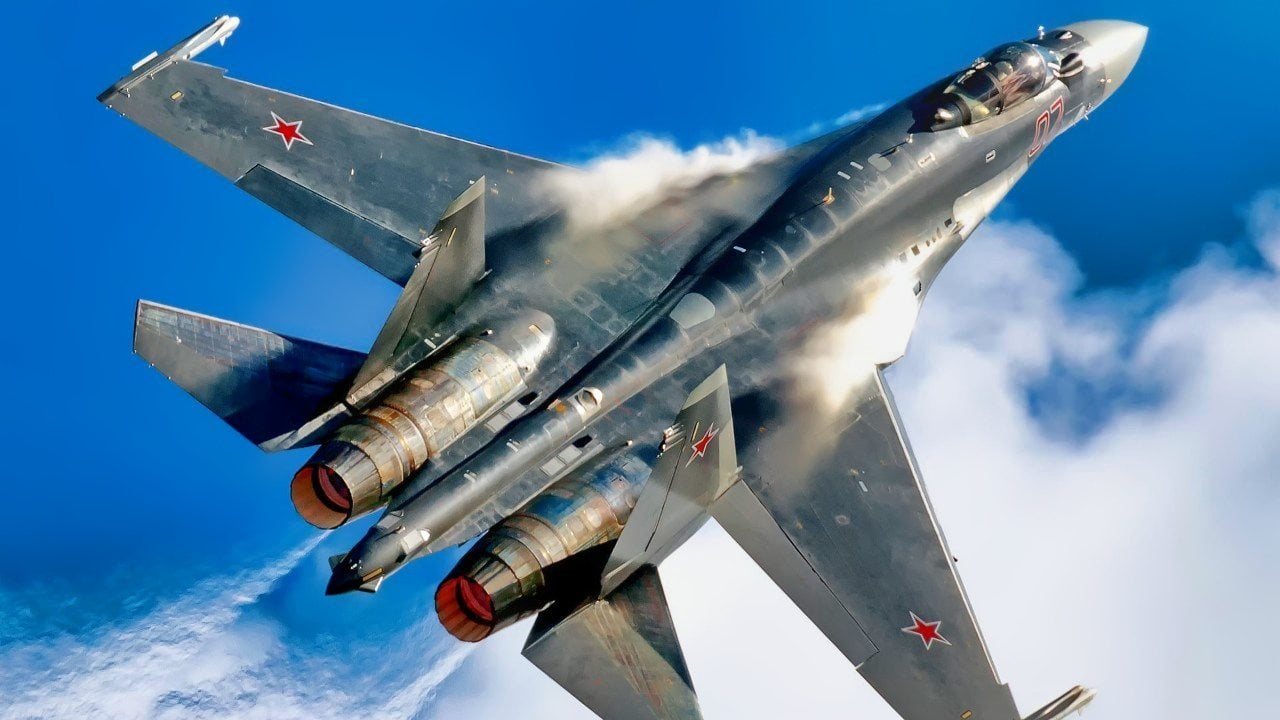The Sukhoi Su-35, often referred to as the “Super Flanker,” is one of the most formidable and advanced fighter jets in the world today. As a fourth-generation plus (+) multi-role fighter, the Su-35 represents the pinnacle of Russian aerospace engineering. Built to outclass enemy aircraft and maintain air superiority, the Su-35 is packed with advanced technologies, making it a lethal force in modern aerial combat.

A Beast in the Sky
At first glance, the Su-35 strikes an imposing figure, with its sleek airframe and powerful twin engines. This fighter jet is an evolution of the famous Su-27, taking its predecessor’s solid foundation and pushing it to the next level. Its twin AL-41F1S afterburning turbofan engines not only allow it to reach speeds of Mach 2.25, but also provide it with supermaneuverability—a key feature that sets it apart from most modern fighter jets.
Supermaneuverability allows the Su-35 to perform advanced aerial maneuvers that seem to defy the laws of physics. These include sharp turns, flips, and even tail slides, making it an elusive target in dogfights. Its agility in the air is unmatched, and it’s no wonder that the Su-35 is considered one of the most dangerous fighter jets to face in close-quarters combat.
Advanced Avionics and Radar Systems
What makes the Sukhoi Su-35 particularly deadly is not just its maneuverability, but its suite of advanced avionics and sensor systems. The Su-35 is equipped with the Irbis-E passive electronically scanned array (PESA) radar, which has the capability to track up to 30 airborne targets simultaneously and engage up to eight of them at once. This radar can detect enemy aircraft from distances of over 400 kilometers, giving the Su-35 a significant advantage in long-range engagements.
In addition to its radar, the Su-35 features advanced electronic warfare systems designed to jam enemy radars and evade missile locks. This makes it not only difficult to detect but also incredibly hard to target, as its defensive systems can disrupt enemy targeting efforts. Combined with its agility, this makes the Su-35 a nightmare for any pilot facing it in combat.
Fearsome Firepower
The Su-35 doesn’t just rely on its maneuverability and stealth—it’s armed to the teeth. This fighter jet is equipped with a 30mm GSh-30-1 cannon for close-range dogfighting and can carry up to 12 external hardpoints for various missiles and bombs. Its primary armament consists of long-range air-to-air missiles like the R-77 and R-27, which are designed to take down enemy aircraft from significant distances.
For ground attack missions, the Su-35 can carry a variety of guided bombs and air-to-ground missiles, making it a versatile multi-role fighter. Whether it’s engaging in air superiority missions or providing support in ground operations, the Su-35 has the firepower to deliver devastating blows.

The Su-35 on the Global Stage
The Sukhoi Su-35 has been in service with the Russian Air Force for several years and has seen combat in various operations. In Syria, the Su-35 played a critical role in providing air superiority for Russian forces, showcasing its capabilities in real-world conflict. Its success in these operations has cemented its reputation as one of the top fighter jets in the world.
The Su-35 has also caught the eye of several foreign militaries, with countries like China and Egypt purchasing the aircraft for their own air forces. Its combination of advanced avionics, agility, and firepower makes it an attractive option for nations seeking a powerful air superiority fighter that can hold its own against Western aircraft.
A Rival to Western Fighters
The Su-35 is often compared to Western fighters like the American F-22 Raptor and F-35 Lightning II. While these fifth-generation stealth fighters have advantages in terms of stealth technology, the Su-35’s supermaneuverability and advanced radar systems make it a formidable adversary in any engagement.
Unlike the F-35, which prioritizes stealth and network-centric warfare, the Su-35 focuses on raw combat performance. Its ability to evade missiles, perform extreme maneuvers, and launch long-range attacks gives it an edge in air-to-air combat, particularly in scenarios where close-quarters dogfights are likely to occur.
Future of the Su-35
While the Su-35 is one of the most advanced fighters in Russia’s arsenal today, the country continues to develop next-generation aircraft, such as the Su-57. However, the Su-35 is expected to remain a critical part of Russia’s air force for years to come, thanks to its versatility and proven combat record.
Ongoing upgrades to the Su-35’s avionics, weapons systems, and defensive measures will ensure that it remains relevant in the ever-evolving world of aerial warfare. As more countries show interest in acquiring the Su-35, its presence on the global stage will only grow.
Conclusion
The Sukhoi Su-35 stands as a testament to Russian engineering and military prowess. With its combination of supermaneuverability, advanced avionics, and powerful armaments, the Su-35 is a deadly force in any combat scenario. Whether facing off against enemy fighters in the sky or delivering ground strikes, the Su-35 continues to prove that it’s a fighter jet built for dominance.
As nations around the world bolster their air forces, the Su-35 is likely to remain a key player in maintaining air superiority for years to come. The future of aerial combat may be uncertain, but one thing is clear: the Sukhoi Su-35 is here to stay, and it’s ready to defend the skies.





